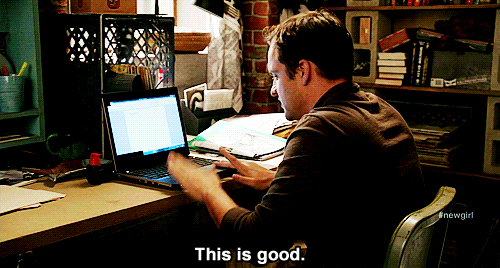6 Successful Admissions Essays About Race That Worked—And Why
/This just in: a year after the Supreme Court struck down Harvard’s admissions system, effectively ending affirmative action in college admissions everywhere, black student enrollment dipped 4%, according to the New York Times. At Brown University, Black students dropped 6% and Hispanic students dropped 4%.
The admissions essay world was rocked last June when the Supreme Court ruled against affirmative action in college admissions. The confusing decision sent admissions officers and nervous seniors reeling about how to proceed. My take? Do. Not. Shy. Away. From. Writing. About. Race.
Right now, the admissions essay is the one place to talk about race successfully—and legally. Here’s a super critical reminder from the New York Times about why writing about race in your admissions essay is the way to go:
The court also allowed students to write about their race in their application essays, if their race was relevant to some life experience.
This is your one chance to show colleges invested in diversity (aka all of them!) how your background will help shape their community for the better. Explain how your background or heritage shaped you into the person you are today. Describe the challenges your race presented and how you overcame them. Still unsure? See how some successful admissions essay examples below wrote about race in a way that enlightened their application and shed light on who they are as a person.
1) Use specific examples to explain your struggles
Successful essay excerpt: “Growing up in a small, conservative community, it's easy to be shoved into your own category if you don't look or act like everyone else. My hair and eyes, instead of being blonde and blue like all of my Czech classmates, were chocolate and espresso. My last name had a "z" in it, and my grandmother called me "mija." By the time I was in grade school, the teasing began, and I was hurt and confused. Didn't all grandmothers call their grandchildren "mija"? Why did everyone except for me have blue eyes? And why was I being called "dirty Mexican" when I was cleaner than the boy who made the remark?” Christina, Yale Class of 2022
Why this works: This paragraph highlights how easy it is to be ostracized in your community due to your external differences. Christina was proud to be Hispanic, but the consistent bullying she received from her peers made it hard for her to keep that perspective on her heritage. This section of her essay portrays her struggle with racism and she later uses it to show her evolution of understanding her own culture as well as that of people around her.
2) Employ dialogue to showcase uncomfortable stereotypes
Successful essay excerpt: ““Faith, that is the whitest thing. You are such an Oreo!” a friend exclaimed.
I didn’t recognize the connection between two seemingly different commodities until I later learned that an Oreo means a black person who displays characteristics typically associated with white people, therefore betraying their black roots. I never saw ballroom and pop music belonging to a certain race, but the negatively charged implications behind ‘betraying’ introduced new guilty sensations. Should I embrace my musical interests and face social alienation from those who share my skin tone? Or set aside my so-called white core and conform to the expectations of an African-American woman that have been placed upon me?” - Faith, John Hopkins, Class of 2027
Why this works: In this excerpt, Faith details how she didn’t come across as “black enough” because of the music she is interested in. By detailing an exact moment when her race and her interest didn't align - according to her friend - she is able to demonstrate how she felt separated from her race. As Faith continues through her essay, she uses that statement by her friends to pursue her interest in music even further by not letting stereotypes be a compass for her interest.
3) Show how your background made you who are today
Successful essay excerpt: “I changed my narrative from “alone” to “unique,” and I strive to spread the message that being different can and should be the norm to my peers. I would not be who I am without my Filipino background, and although the community I live in is what previously made me feel alone, it is also what gave me the potential to learn, grow, and broadened my appreciation for what made me unique.” Isabella, Johns Hopkins Class of 2023
Why this works: Through her self exploration, Isabella was able to change the way she viewed herself and consequently change how others viewed her. She writes about her struggles with being different from her classmates, but is able to be open minded and adopt a different, more positive perspective on her situation. This example shows personal growth and provides evidence that Isabella was able to overcome a difficulty that she was presented with and come out stronger.
4) Compare and contrast to show (not tell) how you were raised
Successful essay excerpt: “We resettled in the Bronx, in my uncle’s renovated basement. It was meant to be our refuge, but I felt more displaced than ever. Gone were the high-rise condos of West L.A.; instead, government projects towered over the neighborhood. Pedestrians no longer smiled and greeted me; the atmosphere was hostile, even toxic. Schoolkids were quick to pick on those they saw as weak or foreign, hurling harsh words I’d never heard before.” - Tulane Diversity Essay
Why this works: In this passage, the writer provides a look into their post-relocation life. Friendly interactions with other people faded, replaced by an unwelcoming and toxic atmosphere. This imagery not only illustrates a personal hardship but also speaks to the larger issue of how racial bias can impact experiences and interactions, emphasizing how these hurtful incidents create a feeling of ostracism and discomfort.
5) Sprinkle in your native language to showcase your heritage
Successful essay excerpt: Growing up in a multicultural household, stories have largely shaped my childhood. My Jidu’s (grandfather’s) tales of sweeping date fields and the old tongues of Dongola served as focal lessons of my family’s Nubian history. Bedtime stories about my Great PaaPaa (grandmother), a Cantonese immigrant who raised three children in 1960s New Haven, Connecticut, introduced me to the profundity of Asian migrant identity. With age, these stories have continued to encourage a deep interest in the shared struggles and triumphs of oppressed populations—an admiration for the history and literature of families like my own. - Summer Mai Li, John Hopkins
Why this works: Summer Mai Li reflects upon the power of intergenerational storytelling as a method for sharing the complex experiences of individuals living in political upheaval. She connects the personal stories of her loved ones to global civil and human rights issues that she intends to study during her time at Hopkins.
6) Mention relevant events in the world that speak to your story
Successful essay excerpt: “I’m angry and I’m tired of pretending otherwise. There have been too many riots, too many marches, too many people shouting into uncaring ears when Black people get treated the way we do. How many dead fathers, sons, mothers, and daughters have to move from the front page of the news to the bottom of the social media feed before we get recognized and listened to. I just want to be heard.” -Boston College Supplemental Essay
Why this works: This approach is a bit risky and I wouldn’t recommend it to everyone. However, this writer jumps right into a pressing civil issue that has been apparent since the founding of America, expressing how problematic racial injustice has been for him and every other black person in the U.S. Using powerful yet justified language to express his anger toward this situation, this writer is able to speak on his race in a way that connects to topical news and link it to his personal experience.






























